Phytotherapy is a therapeutic method that treats diseases using natural extracts of plants or medicinal herbs
Phytotherapy recognizes scientific evidence for some herbs, to the point that some of their herbal extracts fully fall into the category of drugs and are prescribed as such.

Traditional remedies are based on somewhat coarse preparations that allow the use of medicinal herbs as such without directly extracting the active ingredients.
Modern phytotherapy, on the other hand, deals with selecting and obtaining purified extracts. In this way, all the principles contained in medicinal herbs are made safer and more effective. Phytotherapy therefore allows you to use the heart of the plant giving scientific evidence to what popular tradition had intuited for centuries. Let's see some examples:
Centella asiatica is a "herb that in traditional Indian medicine was used in its entirety to exploit its sedative effect. After many centuries it was discovered that specific substances contained in it (triterpenes) had a" specific activity on the venous system. Today these substances have been isolated and registered as a medicinal specialty indicated in the treatment of "venous insufficiency and hemorrhoids. It is therefore an" indication of use completely different from the traditional one and mostly without the risks of the tincture or powder of this " medicinal herb (sedative effect).
Even cypress, if used in the form of a fluid extract, is particularly useful in the treatment of venous insufficiency and more generally in cardiovascular problems (eg varicose veins). Distilling the berries and extracting the essential oils contained in them produces a preparation with a fluidifying action on catarrhal secretions and sedative of cough. Also in this case the medicinal plant is always the same but the properties are clearly different.
With modern extraction techniques, only the substances that are needed can be extracted from medicinal herbs, eliminating the harmful ones responsible for side effects. In fact, a normal plant contains hundreds and hundreds of chemicals, some of which are toxic or otherwise have no beneficial effects.
Herbs can therefore also be dangerous for our health (hemlock, castor beans, oleander leaves, etc.). In phytotherapy these plants are obviously avoided, or are treated in such a way as to separate the toxic substances from the beneficial ones.
Effectiveness of medicinal herbs
Medicinal herbs are a valid support to traditional medicine but generally cannot replace it. Some diseases, on the other hand, can be effectively treated using only herbal extracts recognized by the Ministry of Health. When we talk about phytotherapy we are not talking only about unconventional or alternative medicine, but about a real therapeutic method capable of treating specific diseases.
In other cases, medicinal herbs have proven to be a valuable aid in relieving symptoms and making a contribution to medical therapy. The health efficacy of these herbs must then be considered from a "preventive point of view, without forgetting that" adjective "medicinal" which should make us reflect before using them. Finally, we must consider that just like the active ingredients contained in medicines, even those extracted plants have a minimum threshold of effectiveness below which the result obtained is null, or in any case modest.
NATURAL ORIENTAL MEDICINES: Many traditional medicines, including some anticancer drugs, are essentially derived from medicinal herbs. Obviously, if these pharmaceutical specialties are produced through controlled processes there is almost absolute certainty that the content of the drug is not only effective but also safe. If, on the other hand, we go to collect the plant as such, we can certainly enjoy a modest effectiveness, but we run a greater risk of side effects.
Interactions between medicinal herbs, drugs and foods
10-15% of the Italian population uses herbal preparations for health purposes. In most cases it is self-medication and the doctor is not warned. This behavior is rather risky and makes a detailed information campaign on the subject essential.
Medicinal herbs are not a game or a miraculous potion and should therefore be used exclusively under the supervision of qualified professionals. Only in this way will it be possible to avoid unnecessary risks by making the most of the natural resources at our disposal.
St. John's Wort, for example, known in popular medicine for the emollient properties of the oil, is now widely used as an antidepressant drug, having proved effective in the treatment of medium-sized depressive syndromes.
The indiscriminate use of this drug has seen in recent years an increase in reports regarding the possible interaction with some drugs taken at the same time.
The greater the number of plants associated with each other, the greater the risk of pharmacological interferences, allergies and side effects. So pay attention to domestic infusions or decoctions based on different types of herbs.
Grapefruit juice can greatly increase the absorption of drugs and their bioavailability, even 5-9 times (in particular antihistamines, sedatives, anxiolytics and calcium antagonists). Ginko Biloba is highly toxic when taken together with anticoagulant therapy. On the other hand, allina, the active ingredient in garlic, seems to increase the gastric injuries of commonly used anti-inflammatory drugs (NSAIDs).
Medicinal herbs cultivation
Slimming herbal teas
Homeopathy
Herbs and medicinal plants, what contraindications?
Nutrition, medicinal herbs and flu
Select plant Fir Acacia Acerola Sorrel Yarrow Yarrow Yarrow Aconito Adatoda Garlic Agnocasto Agrimonia Alchemilla Alkekengi Aloe Altea Witch Hazel Ammi or Visnaga Pineapple Andrographis Anemone Pulsatilla Angelica Anise Star Anise Japanese Star Anise Bitter Orange Bitter Areca Arnica Harpagophytum Arpagophyte Artemisia Asteragus Basil Asparagus Asparagus Peruvian Asparagus Asparagus Asparagus Hawthorn Boldo Borage Shepherd's Purse Boswellia Bucco Butea superba Cocoa Coffee Cajeput Calamus Calamus Marigold Camedrio Chamomile Roman Chamomile Camphor Cinnamon Ceylon Maidenhair Capuchin Artichoke Cardamom Cardiac Thistle Asian Thistle Carvi Cascara Cassia Catecu Catha Cabbage Celandine Chicory Centaurea Cinnamon Cypress Celandine Chives Cypress Coca Cola Colchico Combreto Condurango Comfrey Coriander Cranberry Barberry American Chrysanthemum Cumin Turmeric Damiana Digital Dioscorea Drosera Dulcamara Dunalilella Echinacea Eder a Ephedra Elenio Eleutherococcus Helichrysum Evening primrose Horsetail Alfalfa Erica Euphrasia Erisimo Escolzia Eucalyptus Farfara Farfaraccio Calabar bean Fenugreek Fennel Phytolacca Frangola Ash Fumaria Japanese Mushrooms Galega Ganoderma lucidum Garcinia Cambogia Mulberry Gentian Broom Ginkgo Ginkgo Guipana Guipana Gynestra Ginkgo Hibelia Gymnasium Hibiscus Guarulp St. John's Wort Horse Chestnut Ispaghul Hyssop Jaborandi Kava kava Konjac Laminaria Cherry Laurel Lavender Lemongrass Lespedeza Lovage Icelandic Lichen Lemon Flax Lippia Licorice Lobelia Hops Maca Marjoram Maize Mallow Manna Marrubio Marrubio d "water Matè Melaleuca Meliloto American Lemon balm Myrtle Myrama Walnut Nutmeg Walnut vomica Olive tree Meadowsweet Ononide Opuntia Oregano Orthosiphon Nettle Poppy Papaya Parietaria Feverfew Passiflora Chilli Perilla Periwinkle Phyllanthus Plantain Picrorhiza Pilosella Pino Pisci dia Podofillo Polygala Grapefruit Parsley Psyllium Pueraria mirifica Butcher's broom Pygeum Quassia Oak Rhubarb Ratania Rauwolfia currant Castor bean Rhodiola Rosehip Rosemary Rue Willow Sarsaparilla Sage Elderberry Sassafras Sedum Ergot Senna Serenoa Repens Soybean Solidago Tansy Taraxus Tamarind Tamarind Tamarind Tamarind Tamarindo Ursina Valerian Vanilla Mullein Verbena Veronica Viburnum Vinca Pansy Mistletoe Vine Withania Yohimbe Saffron Ginger Pumpkin Select disease Juvenile Acne Rosacea Tinnitus Tinnitus Aerophagia Tendon Affections Afonia Aphthae Algias Functional Halitosis Breastfeeding Allergy Anemia Anguish Anxiety Arteriosclerosis Asthrosis Asthrosis Arthritis Arthritis Men Sex Woman Blepharitis and Conjunctivitis Eye bags Bronchitis Gallstones Kidney stones Salivary stones Baldness Androgenetic Candida Fragile hair Caries Headache Cellulitis Motion sickness Cystitis C limaterio Cholecystopathy High cholesterol Ulcerative colitis Colonoscopy Bruises Hematoma Convalescence Couperose Depression Dermatitis Diaper dermatitis Diabetes Diarrhea Erectile dysfunction Dyslipidemia Dysmenorrhea Dyspepsia Vision disturbances Hemorrhoids Epistaxis Cardiac herethism Fever Fibromyalgia Gastricitis Flatulence GelitisLoss of appetite Urinary infections Influenza Insomnia Hypersomnia Irritable bowel Prostatic hypertension Prostatic hypertrophy Jaundice Laryngitis Renal lithiasis Toothache Sore throat Thinness Menopause Meteorism Mononucleosis Alzheimer's disease Crohn's disease Nausea Vomiting Obesity Dark circles Psychiatric disease Dry skin Osteophoritis Anal fissures Gastroesophageal reflux Nasopharyngitis Rolls (abdomen fat) Wrinkles Salmonella Senescence Premenstrual syndrome Sinusitis Quit smoking Overweight Steatosis hepatic constipation Stomatitis Stress Cough High triglycerides Ulcer Burns Fragile nails Hot flushes Warts Dizziness Anesthesia Anesthetics Anti-allergic Anesthesia Anti-allergic Anesthesia Anti-allergic Anesthesia Anti-allergic Anesthesia Anti-allergic Anesthesia Anti-allergic properties Anti-asthmatics Antibiotics Anti-diarrheal Anti-cellulite Anti-convulsive Anti-diaphoretic Anti-diarrheal Anti-edematous Anti-helminthics Antiemetic Antiemorroidarie antiphlogistic Antiidrotiche Antinevrotiche Antioxidants antipyretic antirheumatic antiscorbutic Antiseptic antispasmodic anti-uric Aperitive Flavoring Astringent Balsamic Bechiche Capillarotrope cardiotonic Carminative Cathartic caustics Cicatrizant cholagogue choleretic Dyes Decongestants Deodorants purifying Detergents diaphoretic Disinfectants Detox Refreshing Diuretic Exciting emetic emmenagoghe Emollients Haemostatic Energy Epatoprotettrici Expectorants eupeptic photosensitizing Galattofore Galattofughe Galattogoghe Moisturizers Immunostimulators Hypertensive Hypnotic Hypoglycemic Hypotensive Irritants Laxatives Soothing Narcotic Nerves Nutrients Odontalgic Pectoral Purgative Revulsive Remineralizing Refreshing Rubefacient Slagogas Sedative Soporifugas Sneezing Stomachic Stomatics Narcotic Vascular Tightening Vascular that Vulneraries

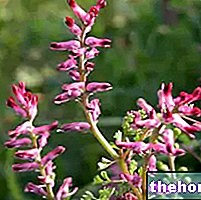
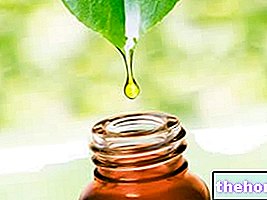
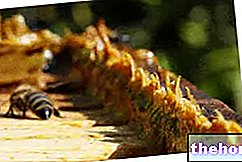
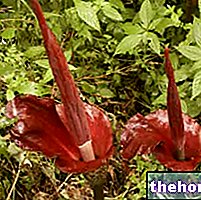
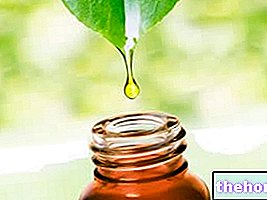
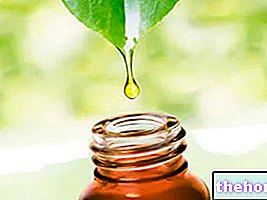
















-nelle-carni-di-maiale.jpg)




